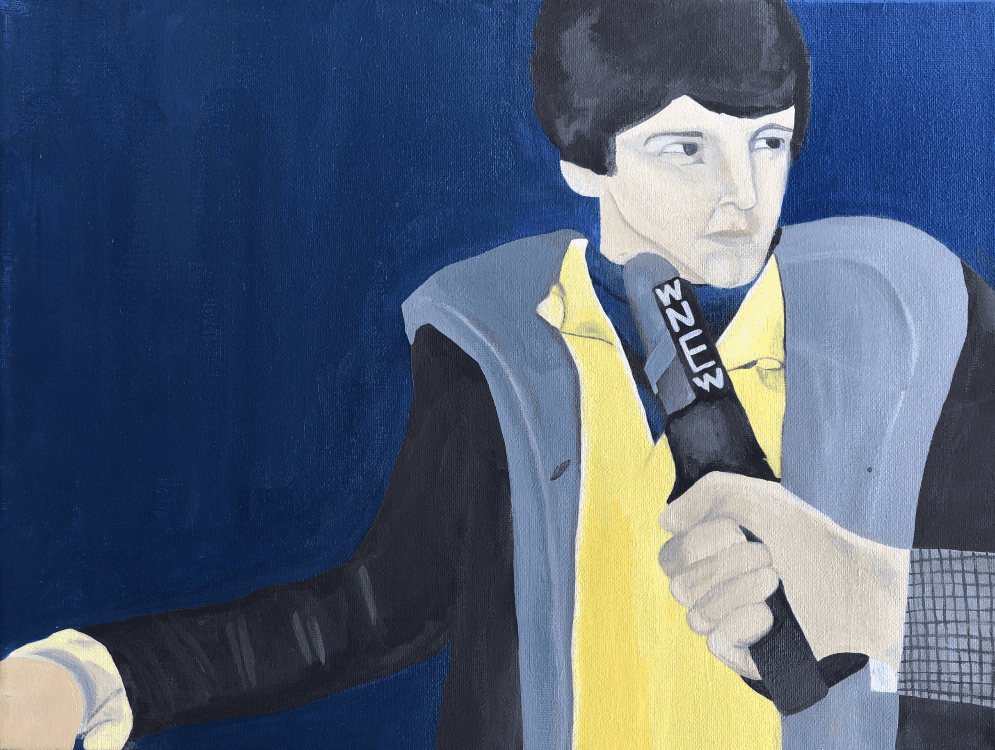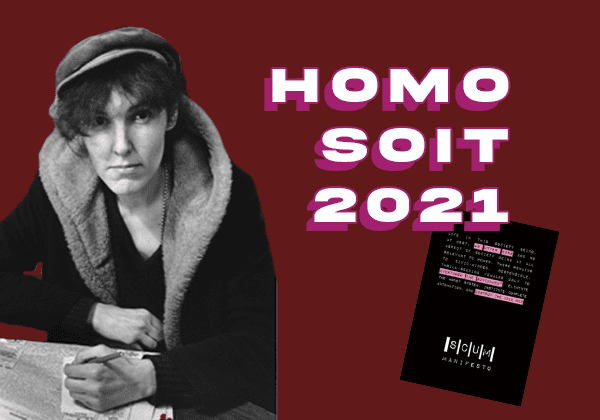In discovering the queer canon, one encounters icons aplenty whose dignity in the face of the adversity is their claim to heroism. It is obviously convenient for the symbols of mainstream queerness to be victims who bore their hardships stoically, but there is so much more to queer history than martyrdom. The western world’s celebrated ‘normative’ queerness pushes us toward heteropatriarchy: nuclear family structures, monogamy, and aspirations to wealth, in an effort to discourage resistance to the capitalist hegemony that it reinforces. But the queer history that we should be celebrating is radical, trangressive, perverse—anything but socially acceptable. The path to our happy ‘normal’ status has been paved by these radicals, particularly the most vulnerable of our communities, and overwhelming by the working classes, despite what rainbow capitalists want you to think.
One such radical is lesbian feminist Valerie Solanas (1936–1988), who purported exactly opposite tactics to the proponents of assimilation. In her rather short but remarkable life, Solanas completed a degree in psychology, worked as a sex worker, shot Andy Warhol, and wrote, mostly plays and essays. While the attempt on Warhol’s life was a more outrageous event at the time, the SCUM Manifesto has—in my opinion—had a farther-reaching, more lasting impact.
Solanas’ SCUM Manifesto is a socially disruptive, disestablishmentarian work that does not pander to heteronormativity at all, but rather advocates revolutionary misandry. Her irreverent but incisive call to arms begins thus, going straight for the jugular: “Life in this society being, at best, an utter bore and no aspect of society being at all relevant to women, there remains to civic-minded, responsible, thrill-seeking females only to overthrow the government, eliminate the money system, institute complete automation and destroy the male sex.”
Solanas speaks to a queer pipe-dream of a patriarchy-less existence, and recognises the capitalist labour-selling system as collaboratory in the patriarchal repression that she is subject to as a queer woman. Her remarks only become more incendiary as the piece progresses. She inverts the bigoted frameworks of biology and sociology that are usually weaponised against women, queer, and non-white people, and applies them to cishet men, describing them as ‘walking abortions’ due to the makeup of their chromosomes. Solanas employs the pseudo-scientific terminology reminiscent of that of eugenicists and other male supremacists in western academia, which has been traditionally used to justify the control and infantilisation of marginalised groups, thereby holding their judgements up to a mirror by which they may be examined. Solanas’ conception of transness consequently leaves much to be desired—the references to ‘drag queens’ are obviously deeply problematic. Her brazen characterisation of cis male inferiority as a biological issue targets the irony of the acceptability of a misogyny; it cloaks itself in rationality, while the hypothetically equivalent misandry is considered the domain of the insane. Thus, while I do not think all of the manifesto should be taken literally, it clearly contains paralysing societal truths grounded in the experiences of its author.
Valerie’s method of revealing her ideas is important as well. She does not shy away from the visceral emotionality usually weaponised as a weakness against non-men. Nor does she attempt to rationally engage with the concerns of patriarchy, revealing that these structures have been set up specifically to pathologise and ostracise her experiences. Her disdain for men, her desire to burn the system to the ground, her queerness, aren’t palatable, and she would never be able to reconcile these aspects of herself with the society she was forced to participate in, so she rejected the premise of that society altogether. So much of contemporary discourse about queer issues centres a desire for ‘normalcy’, and enshrines progress that gives us the ability to assimilate into society, without recognising that it was built to exclude us. The more comfortable we become with the idea that queerness is defined by its deviancy, the closer we will be to actual liberation. As queer people, we shouldn’t be trying to convince the cishet world that we are ‘just like them.’ This limits queerness to an internal experience of sexual preference or gender identity, rather than one of a materially marginal existence in disjuncture to the marriage-baby-retirement model. Identity is not the reason queer people are subject to violence; it is the threat that we pose to the capitalist hegemony, of which the nuclear family is a foundational constituent. Being accepted as rule-abiding queers should not be our goal, for it will only erode the radical spirit that encouraged us to take to the streets and convince the world to embrace us in the first place.

Valerie’s manifesto satisfies the craving to lash out, to burn, to fuck up, and to exist outside of the patriarchal policing of women, queer people, and other marginalised groups. Now more than ever, as queerness becomes branded, corporatised, and monetised, we have to protect the uniqueness of our communities by rejecting this gentrification, or risk our freedom slipping ever farther from our grasp. The queer experience will always be transgressive; in embracing this fact we hold our true, collective, revolutionary power.





